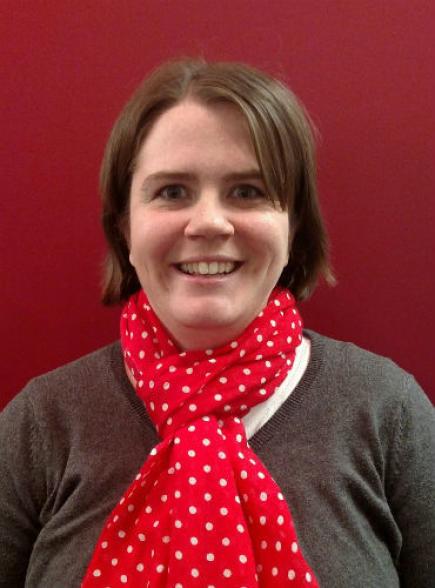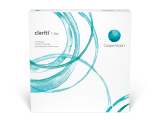As America's kids return to school in the coming weeks, a lot of attention will fall on the importance of school vision screenings. Screenings are a valuable tool for identifying children who need visual help to maximize their academic potential. In addition to school screenings, though, Ohio has implemented a unique education program for students throughout the state. The RealEyes program is designed to educate students of all level about eye health and safety. Ohio optometrists volunteer their time to visit schools and present the RealEyes curriculum in their communities.
We took a moment to discuss the program with Amy Bankey of Fishbaugh Family Eye Care in northwest Ohio. Dr. Bankey is one of the programs most prolific OD volunteers, having presented 33 times to a total of 1,224 students during the 2017-18 school year.

Q: Tell us about Ohio’s RealEyes program and your involvement with it.
RealEyes is an Ohio Optometric Association program that brings volunteer optometrists into classrooms to teach school children in grades pre-K thru 8th about eyes and eye safety. The program started in 2000 and is funded by the Ohio Save Our Sight Fund. Recently, the program surpassed presenting to over 1,000,000 kids in its 18 year history! In the 2017-18 school year alone, presenters educated over 100,000 children about their eyes in all of Ohio’s 88 counties. I have been a RealEyes volunteer since 2012. I have had over 6,500 students watch my presentations and have travelled to over 30 schools.
Q: Do you find that educating children about their eyes and vision provides benefits within your community beyond what traditional school vision screenings accomplish?
Absolutely! RealEyes allows the kids to interact with an optometrist for 30 to 45 minutes. They learn about how the eyes work and learn about eye safety. They do not get this interaction during a school screening. A traditional school screening just checks their vision, depth perception, and maybe color vision. Usually there is not a segment to educate the kids, especially on all of the topics that RealEyes covers. For the past few years, I have done presentations at a local school for autistic children. This year a few weeks after I was there, I had a parent come up to me to thank me for going to that school. The mother said that she always struggled to get her autistic son to keep his glasses on, but since the presentation, he understood better why glasses are important and now loves wearing his glasses!
Q: How does engaging with the students in your community in this way benefit your practice?
I have examined many patients after they watched my presentations at their school. Just by introducing myself and saying where I work puts the practice name out there for the students to hear. I also talk to and give business cards to the teachers and school nurses in case they have a student that they think would benefit from an eye exam. During one presentation’s Q & A session, I had a student ask if the practice sells sports goggles. He turned up in my exam chair a couple of weeks later. Turns out, he had an orbital blowout fracture from a baseball accident, and the ophthalmologist who examined him at the time said he would only approve a return to the baseball field if the kid was wearing goggles. The father took his child to the practice that they had always gone to before, but that practice couldn’t get him an appointment for two months. The child remembered that my practice sells sports goggles, so he told his dad to drive to our office. The dad was impressed that I was able to see his son so quickly, and now that family has continued to see me for their eye care.
Q: RealEyes provides student education about eye safety, does it not? What topics related to safety do you teach?
Some of the younger kids are taught to wear sunglasses outside and to stay away while someone is mowing the yard to avoid objects flying out of the mower. Other topics include: wearing the proper sports eye protection, not standing close to fireworks, not sharing eye make-up, and not sharing contact lenses.
Q: In August, the CDC sponsors Contact Lens Safety Week. How do you teach and encourage safe contact lens practices for children in your practice? In RealEyes?
In my practice, I tell every contact lens patient (young or old) about possible infections that can come from wearing contact lenses. I discuss that over wearing the contact lenses increases the risk for infections and ulcers. I also discuss that water and contact lenses shouldn’t mix due to the risk of acanthamoeba. RealEyes tells kids that they shouldn’t share contact lenses with their friends and also discussed that people should have a prescription to get colored contact lenses.
Q: We’ve discussed how student education through RealEyes impacts your community. How does participation impact you personally?
I love to present RealEyes! It is consistently my number one way of giving back to the community! I look forward to each opportunity to educate the kids. I believe in RealEyes so strongly that I have done presentations to my daughter’s school. It’s a joy to see the moment when a child has a light bulb go off in his head concerning eye health and safety. Some of the kids love the presentations so much that I get high fives or hugs after I’m done. I feel like reaching out to the kids is an amazing experience and the teachers seem to love the involvement too!
Q: Do you have a favorite story or experience from your RealEyes participation that you’d like to share?
During one of my very first presentations, I was doing a presentation to a group of kindergarteners. In that curriculum, I go over the names of different parts of the eye such as eyelashes, iris, and pupil. One child raised his hand and asked what the white part of the eye is called. I started to explain that it is “a tissue called the…” I was cut off right there with “Eww, there’s a tissue in our eyes?” I learned really quickly that I have to choose my words carefully around the little ones.
Whether your state has a formalized program or not, now is a great time to think about how you, your practice and your community may benefit if you take the time to teach area youth about the wonderful gift of sight. For more information on Ohio’s RealEyes program, visit https://associationdatabase.com/aws/OOA/pt/sp/realeyes.





